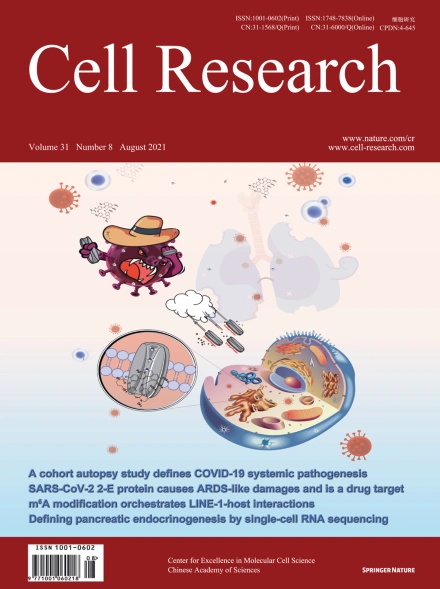
Advanced Search
Submit Manuscript
Advanced Search
Submit Manuscript
Volume 31, No 8, Aug 2021
ISSN: 1001-0602
EISSN: 1748-7838 2018
impact factor 17.848*
(Clarivate Analytics, 2019)
Volume 31 Issue 8, August 2021: 836-846 |
A cohort autopsy study defines COVID-19 systemic pathogenesis
Xiao-Hong Yao1,2 , Tao Luo1,2 , Yu Shi1,2 , Zhi-Cheng He1,2 , Rui Tang1,2 , Pei-Pei Zhang3,4 , Jun Cai5 , Xiang-Dong Zhou6 , Dong-Po Jiang7 , Xiao-Chun Fei4 , Xue-Quan Huang8 , Lei Zhao5 , Heng Zhang4 , Hai-Bo Wu3 , Yong Ren9 , Zhen-Hua Liu10 , Hua-Rong Zhang1,2 , Cong Chen1,2 , Wen-Juan Fu1,2 , Heng Li3 , Xin-Yi Xia11 , Rong Chen12 , Yan Wang1,2 , Xin-Dong Liu1,2 , Chang-Lin Yin13 , Ze-Xuan Yan1,2 , Juan Wang14 , Rui Jing15 , Tai-Sheng Li16 , Wei-Qin Li17 , Chao-Fu Wang4 , Yan-Qing Ding18 , Qing Mao19 , Ding-Yu Zhang12 , Shu-Yang Zhang20,* , Yi-Fang Ping1,2,* , Xiu-Wu Bian1,2,3,*
1Institute of Pathology, Southwest Hospital, Third Military Medical University (Army Medical University), Chongqing, ChinaSevere COVID-19 disease caused by SARS-CoV-2 is frequently accompanied by dysfunction of the lungs and extrapulmonary organs. However, the organotropism of SARS-CoV-2 and the port of virus entry for systemic dissemination remain largely unknown. We profiled 26 COVID-19 autopsy cases from four cohorts in Wuhan, China, and determined the systemic distribution of SARS-CoV-2. SARS-CoV-2 was detected in the lungs and multiple extrapulmonary organs of critically ill COVID-19 patients up to 67 days after symptom onset. Based on organotropism and pathological features of the patients, COVID-19 was divided into viral intrapulmonary and systemic subtypes. In patients with systemic viral distribution, SARS-CoV-2 was detected in monocytes, macrophages, and vascular endothelia at blood–air barrier, blood–testis barrier, and filtration barrier. Critically ill patients with long disease duration showed decreased pulmonary cell proliferation, reduced viral RNA, and marked fibrosis in the lungs. Permanent SARS-CoV-2 presence and tissue injuries in the lungs and extrapulmonary organs suggest direct viral invasion as a mechanism of pathogenicity in critically ill patients. SARS-CoV-2 may hijack monocytes, macrophages, and vascular endothelia at physiological barriers as the ports of entry for systemic dissemination. Our study thus delineates systemic pathological features of SARS-CoV-2 infection, which sheds light on the development of novel COVID-19 treatment.
https://doi.org/10.1038/s41422-021-00523-8